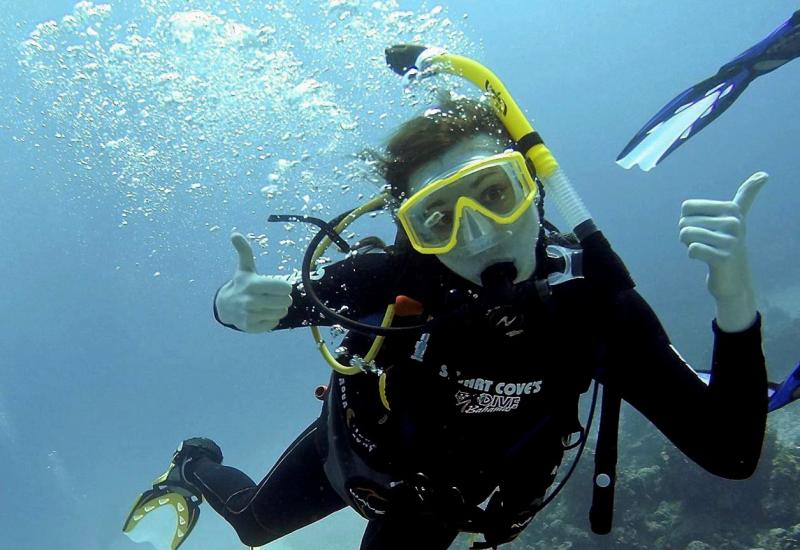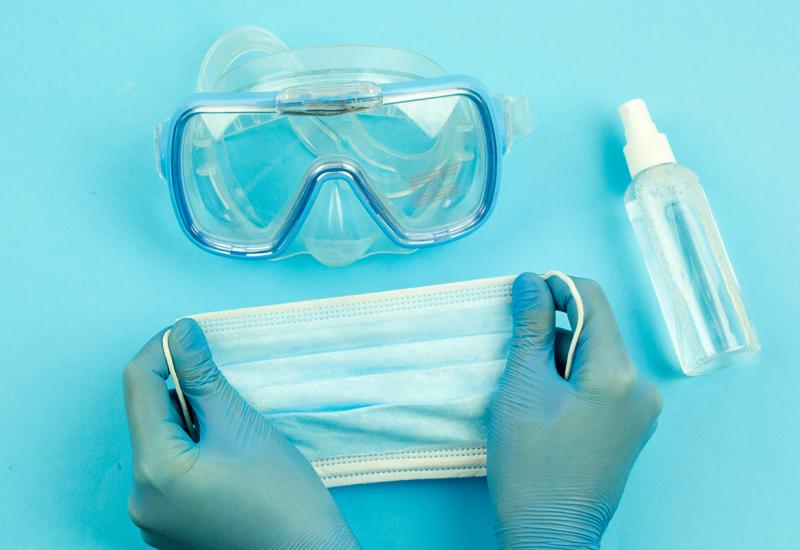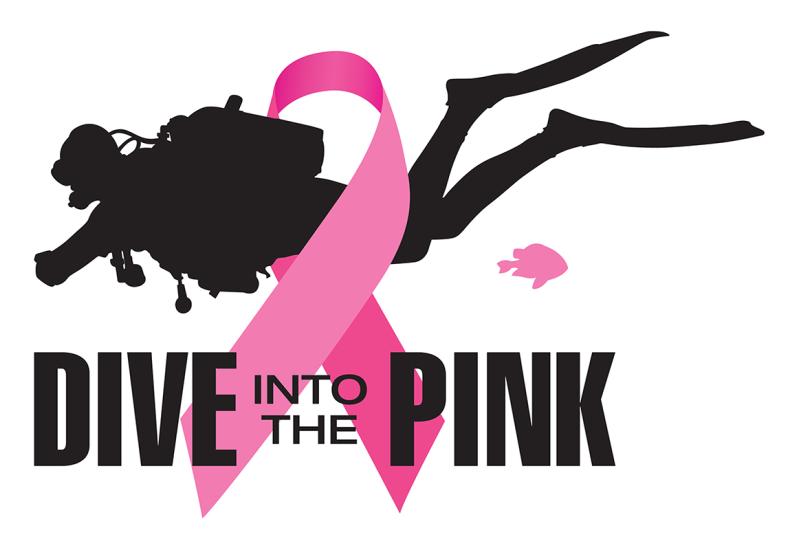Mal de Mer No More
February 2008
By Selene Yeager
Anyone who's ever tried to keep their cookies settled while riding on a turbulent sea knows Kermit speaks the truth: It's not easy being green. But it's the rare ocean traveler who's never turned the sickly shade. Nearly 100 percent of boat passengers will experience some level of seasickness on rough waters, says the Centers for Disease Control, and some of us seem to get green around the gills 100 percent of the time, regardless of the motion of the ocean.
"Some people have a higher susceptibility to motion sickness, which is likely genetic," says researcher Robert Stern, Ph.D., distinguished professor of psychology at Pennsylvania State University, who makes a living studying the good-spirited students and staff who volunteer to take a ride in his laboratory's rotating optokinetic drum. "But there are many, many factors involved in motion sickness. Your inner ear structure, your brain structure and neurochemicals, as well as your vasopressin (hormones that affect your body's fluid balance) response, all play a role. To manage motion sickness, you need to help your body manage on any one of these fronts."
That's why there are so many seemingly unrelated remedies for motion sickness. Some are aimed at quieting your gut. Some quell inner ear activity. Some calm your head. But there's one rule that applies to all: "Take precautions early, preferably before you feel sick," says diving doc Lewis Kohl, M.D., chairman of emergency medicine at Brooklyn's Long Island College Hospital. "Most remedies work best prophylactically."
The following is a head-to-toe guide for calming the quease no matter how rough the seas.
Train Your Brain
At the most basic level, seasickness is a matter of sensory mismatch. Your brain relies on information from the rest of your body to tell it what's going on. When you're sitting on a boat that's rolling on the water, the body, inner ear and eyes all send different signals to the brain. Your brain gets confused and you get queasy. "Any way you can help your brain make sense of the signals will head off seasickness," Kohl says. Try these simple steps:
Look up and out Put down the book. Stop tinkering with your computer. Any close-up activity magnifies your sensory mismatch because it forces your brain to do steady work while the surrounding environment is pitching about. Look out on the horizon as it usually appears very stable. Planting your feet and buttocks on the boat makes you feel stable. Your peripheral vision will see the ocean swells that you feel. The whole picture will make more sense to your brain. "For this same reason, you should stay up on deck in the fresh air rather than hunkering down in your cabin," Kohl says.
Brace yourself If possible, move to the center of the boat, where the rocking and rolling is less amplified. Sit straight with your back supported against a wall or chair. The more centered and stable you are, the less ill you'll feel.
Make small talk Sitting there thinking "Gee, I sure hope I don't get sick" is a surefire way to start feeling sick. "Distracting yourself with conversation literally helps keep your mind off the mixed signals it's getting from the outside," Kohl says.
Sleep it off Mild cases of seasickness often show up as sleepiness. That's why you might find yourself nodding off minutes after setting sail. If you can sleep comfortably, go for it.
Pop a pill If controlling the messages your brain gets from the environment doesn't work, you can try heading them off at the pass with classic motion sickness meds like Dramamine, Bonine and even antihistamines like Benadryl. These drugs can help quell motion sickness by blocking sensory-nerve transmission, which is a fancy way of saying they interrupt the flow of information from various places like the middle ear (involved in balance) to the brain. They can cause drowsiness and fuzzy thinking, however, so definitely take them for a test drive before diving on them.
Celebrate some more birthdays Want to ease seasickness? Just get older! jokes Dutch motion-sickness researcher Jelte Bos, Ph.D.--but really, he's serious. In a study he published in last June's issue of Ergonomics, Bos found that the incidence of motion sickness drops off after early adulthood and stays on a steady decline with age. "It's one upside to the dulling of your senses and slowing of circulation that happens with age," Kohl says.
Get Your Ears in Gear
Of all the senses shouting signals to your sea-addled brain, your inner ears are probably the loudest, since they're the ones responsible for keeping you right-side up when the environment is turned upside down. Quieting your inner ear can quell nausea.
Scopolamine, a drug that reduces the activity of nerve fibers in your inner ear, is hands down the most successful commercial seasickness medication on the market. You get a steady dose by wearing a medicated patch like the Transderm Scop patch behind your ear. "They can make a world of difference," Kohl says, but they're not without side effects--mainly dry mouth and blurred vision--so you need to take a few precautions:
Use it early The patch does little to no good if you slap it on once you're sick. Put it in place about four hours before you climb aboard the boat.
Switch spots If you're on a multiday trip and use more than one patch, alternate ears. "Wearing patches on the same spot increases your risk for skin irritation," Kohl says.
Wash your hands! "The patch can cause blurred vision as a side effect," Kohl says. "But most people I've seen with this symptom didn't wash their hands after applying the patch. You've got to do that--or better yet, wear gloves. Getting any of that medicine in your eyes will cause your pupils to dilate and disturb your vision."
Keep it whole Some people cut their patches in hopes of reducing side effects. Don't. "The patch is a time-release product, so you get the medicine in slow, even doses. Once you cut it, you lose that control mechanism and the symptoms can be much worse," Kohl says.
Tame Your Tummy
Your brain may be calling the shots, but your belly helps send out the warning signals that lead to seasickness. "Some people try to avoid getting sick by not eating, which inevitably backfires," Kohl says. "Low blood sugar triggers nausea, so an empty stomach can be as bad as one that's too full." The trick is to eat just enough of the right stuff. Here's how:
Try a little protein Soda crackers are an old standby for pregnant women and others who battle nausea, but a high-protein breakfast bar or protein drink may be even better, Stern says. "In our tests, people who ate high-protein snacks fared better in the rotating drum than those who ate carbs, which is counter to what you often hear." That doesn't necessarily mean wolfing down a triple cheeseburger, but something light and simple like half a turkey sandwich may do the trick.
Hydrate with H2O Sipping fresh, cool water keeps you hydrated, which can help keep nausea at bay.
Have a Coke There's a reason it helps put a smile on your face when your tummy's unhappy. Most sodas contain phosphoric acid and sugars, the same ingredients you'll find in Emetrol, an over-the-counter anti-nausea drug, but an unexplained myth surrounds Coke's unique nausea-fighting abilities.
Grab some ginger "Ginger is known to calm the stomach and helps people survive in the rotating drum longer without developing symptoms," Stern says. The recommended dosage is one gram of the powdered root (sold at health food stores). Take it before you get on the boat.
Easy on the party food Anything that can upset your tummy on dry land can send you right over the edge of the boat on the water. Forgo high-fat or fried foods that can cause indigestion, and imbibe wisely the night before. Even a mild hangover sets the stage for major mal de mer.
Apply Pressure to the System
There are some remedies that can't be easily explained by our usual Western medicine standards. Wrist acupressure is one of them. For centuries, traditional Chinese medicine has included acupuncture or acupressure on the inside of the wrist, at a spot called P6, as a way to suppress the nausea associated with motion sickness.
Though we can't explain these techniques in Western terms, we can study them, which Stern has done in his lab. In a study of 25 men and women, those who wore an Acuband (a band that applies pressure to P6) reported fewer motion-sickness symptoms and showed less abnormal gastric activity than when they took a trip in the rotating drum wearing the band in the wrong location or not wearing one at all.
"It doesn't work for everyone. But overall it does help reduce symptoms," Stern says. You can find simple pressure bands like Sea-Band and Acuband at your local drug store. More sophisticated, battery-operated bands like Reliefband, which delivers an electrical pulse instead of pressure, are out there as well.
Whatever you do, don't let seasickness keep you ashore. Most people can find relief from at least one of these remedies. Seasickness is usually a short-lived misery, and in most cases a good dive will help erase the memory of any mal de mer.
February 2008
By Selene Yeager
Anyone who's ever tried to keep their cookies settled while riding on a turbulent sea knows Kermit speaks the truth: It's not easy being green. But it's the rare ocean traveler who's never turned the sickly shade. Nearly 100 percent of boat passengers will experience some level of seasickness on rough waters, says the Centers for Disease Control, and some of us seem to get green around the gills 100 percent of the time, regardless of the motion of the ocean.
"Some people have a higher susceptibility to motion sickness, which is likely genetic," says researcher Robert Stern, Ph.D., distinguished professor of psychology at Pennsylvania State University, who makes a living studying the good-spirited students and staff who volunteer to take a ride in his laboratory's rotating optokinetic drum. "But there are many, many factors involved in motion sickness. Your inner ear structure, your brain structure and neurochemicals, as well as your vasopressin (hormones that affect your body's fluid balance) response, all play a role. To manage motion sickness, you need to help your body manage on any one of these fronts."
That's why there are so many seemingly unrelated remedies for motion sickness. Some are aimed at quieting your gut. Some quell inner ear activity. Some calm your head. But there's one rule that applies to all: "Take precautions early, preferably before you feel sick," says diving doc Lewis Kohl, M.D., chairman of emergency medicine at Brooklyn's Long Island College Hospital. "Most remedies work best prophylactically."
The following is a head-to-toe guide for calming the quease no matter how rough the seas.
Train Your Brain
At the most basic level, seasickness is a matter of sensory mismatch. Your brain relies on information from the rest of your body to tell it what's going on. When you're sitting on a boat that's rolling on the water, the body, inner ear and eyes all send different signals to the brain. Your brain gets confused and you get queasy. "Any way you can help your brain make sense of the signals will head off seasickness," Kohl says. Try these simple steps:
Look up and out Put down the book. Stop tinkering with your computer. Any close-up activity magnifies your sensory mismatch because it forces your brain to do steady work while the surrounding environment is pitching about. Look out on the horizon as it usually appears very stable. Planting your feet and buttocks on the boat makes you feel stable. Your peripheral vision will see the ocean swells that you feel. The whole picture will make more sense to your brain. "For this same reason, you should stay up on deck in the fresh air rather than hunkering down in your cabin," Kohl says.
Brace yourself If possible, move to the center of the boat, where the rocking and rolling is less amplified. Sit straight with your back supported against a wall or chair. The more centered and stable you are, the less ill you'll feel.
Make small talk Sitting there thinking "Gee, I sure hope I don't get sick" is a surefire way to start feeling sick. "Distracting yourself with conversation literally helps keep your mind off the mixed signals it's getting from the outside," Kohl says.
Sleep it off Mild cases of seasickness often show up as sleepiness. That's why you might find yourself nodding off minutes after setting sail. If you can sleep comfortably, go for it.
Pop a pill If controlling the messages your brain gets from the environment doesn't work, you can try heading them off at the pass with classic motion sickness meds like Dramamine, Bonine and even antihistamines like Benadryl. These drugs can help quell motion sickness by blocking sensory-nerve transmission, which is a fancy way of saying they interrupt the flow of information from various places like the middle ear (involved in balance) to the brain. They can cause drowsiness and fuzzy thinking, however, so definitely take them for a test drive before diving on them.
Celebrate some more birthdays Want to ease seasickness? Just get older! jokes Dutch motion-sickness researcher Jelte Bos, Ph.D.--but really, he's serious. In a study he published in last June's issue of Ergonomics, Bos found that the incidence of motion sickness drops off after early adulthood and stays on a steady decline with age. "It's one upside to the dulling of your senses and slowing of circulation that happens with age," Kohl says.
Get Your Ears in Gear
Of all the senses shouting signals to your sea-addled brain, your inner ears are probably the loudest, since they're the ones responsible for keeping you right-side up when the environment is turned upside down. Quieting your inner ear can quell nausea.
Scopolamine, a drug that reduces the activity of nerve fibers in your inner ear, is hands down the most successful commercial seasickness medication on the market. You get a steady dose by wearing a medicated patch like the Transderm Scop patch behind your ear. "They can make a world of difference," Kohl says, but they're not without side effects--mainly dry mouth and blurred vision--so you need to take a few precautions:
Use it early The patch does little to no good if you slap it on once you're sick. Put it in place about four hours before you climb aboard the boat.
Switch spots If you're on a multiday trip and use more than one patch, alternate ears. "Wearing patches on the same spot increases your risk for skin irritation," Kohl says.
Wash your hands! "The patch can cause blurred vision as a side effect," Kohl says. "But most people I've seen with this symptom didn't wash their hands after applying the patch. You've got to do that--or better yet, wear gloves. Getting any of that medicine in your eyes will cause your pupils to dilate and disturb your vision."
Keep it whole Some people cut their patches in hopes of reducing side effects. Don't. "The patch is a time-release product, so you get the medicine in slow, even doses. Once you cut it, you lose that control mechanism and the symptoms can be much worse," Kohl says.
Tame Your Tummy
Your brain may be calling the shots, but your belly helps send out the warning signals that lead to seasickness. "Some people try to avoid getting sick by not eating, which inevitably backfires," Kohl says. "Low blood sugar triggers nausea, so an empty stomach can be as bad as one that's too full." The trick is to eat just enough of the right stuff. Here's how:
Try a little protein Soda crackers are an old standby for pregnant women and others who battle nausea, but a high-protein breakfast bar or protein drink may be even better, Stern says. "In our tests, people who ate high-protein snacks fared better in the rotating drum than those who ate carbs, which is counter to what you often hear." That doesn't necessarily mean wolfing down a triple cheeseburger, but something light and simple like half a turkey sandwich may do the trick.
Hydrate with H2O Sipping fresh, cool water keeps you hydrated, which can help keep nausea at bay.
Have a Coke There's a reason it helps put a smile on your face when your tummy's unhappy. Most sodas contain phosphoric acid and sugars, the same ingredients you'll find in Emetrol, an over-the-counter anti-nausea drug, but an unexplained myth surrounds Coke's unique nausea-fighting abilities.
Grab some ginger "Ginger is known to calm the stomach and helps people survive in the rotating drum longer without developing symptoms," Stern says. The recommended dosage is one gram of the powdered root (sold at health food stores). Take it before you get on the boat.
Easy on the party food Anything that can upset your tummy on dry land can send you right over the edge of the boat on the water. Forgo high-fat or fried foods that can cause indigestion, and imbibe wisely the night before. Even a mild hangover sets the stage for major mal de mer.
Apply Pressure to the System
There are some remedies that can't be easily explained by our usual Western medicine standards. Wrist acupressure is one of them. For centuries, traditional Chinese medicine has included acupuncture or acupressure on the inside of the wrist, at a spot called P6, as a way to suppress the nausea associated with motion sickness.
Though we can't explain these techniques in Western terms, we can study them, which Stern has done in his lab. In a study of 25 men and women, those who wore an Acuband (a band that applies pressure to P6) reported fewer motion-sickness symptoms and showed less abnormal gastric activity than when they took a trip in the rotating drum wearing the band in the wrong location or not wearing one at all.
"It doesn't work for everyone. But overall it does help reduce symptoms," Stern says. You can find simple pressure bands like Sea-Band and Acuband at your local drug store. More sophisticated, battery-operated bands like Reliefband, which delivers an electrical pulse instead of pressure, are out there as well.
Whatever you do, don't let seasickness keep you ashore. Most people can find relief from at least one of these remedies. Seasickness is usually a short-lived misery, and in most cases a good dive will help erase the memory of any mal de mer.










